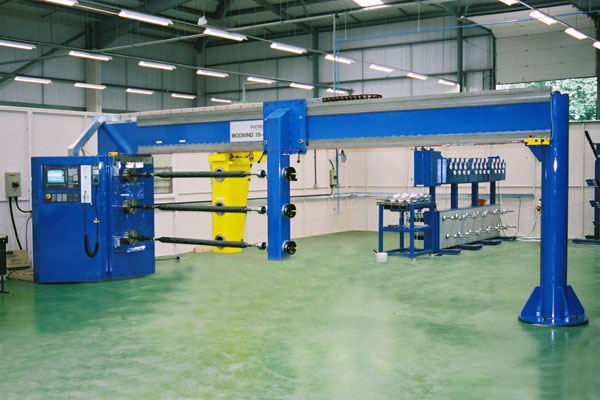Filament winding is a process that is followed in order to create a composite product. This fabrication technique is mainly used to manufacture closed end structures, such as tanks or vessels, as well as open structures, such as cylinders. From heavy duty construction products, to bicycle components, to pipes, to aircraft fuselages, to transmission poles… the list is endless when it comes to the different products that can be made via this process. Keeping that in mind, in this post we’re going to reveal a bit more about filament winding and the advantages that are associated with using this technique.

So, we know all about the components that can be created via this process, but what does it actually entail? Filament winding involves using a mandrel, which is basically a shape where fibre resin and material is winded around. This creates the composite product. One of the great things about this fabrication technique is the fact that different resins and fibres can be used for ultimate flexibility, i.e. so that the desired characteristics of the finished component are achieved. This versatility is of paramount importance, as it means a vast assortment of products can be created.
There are other great benefits associated with this process, as you will soon discover. One of the main reasons why filament winding is popular is because it is a cost effective solution. The cost of producing components is reduced because of automation and the use of low cost materials. When contrasted with the majority of other component manufacturing methods, this process tends to involve less labour, less materials and less expenses in terms of transportation.
As briefly touched upon, one of the reasons this is a cheaper solution is because of the automation entailed. Not only does this reduce costs, but it speeds up the process as well, since machines will accurately and rapidly reproduce components that are identical. It can be automated to a high degree. This means that highly complex components can be mass produced.
One of the greatest reasons for using filament winding is the fact that the components produced are exceptionally lightweight however strength has not been compromised. This is beneficial for a whole host of reasons. Of course strength is important if the component is to be durable and of a high quality. As already mentioned, you can use the flexibility of the process to your advantage in order to create components that boast the strength and other characteristics you need. Nevertheless, no matter how strong the component in question is, it will be very lightweight at the same time. This makes it easier to use and transport, which in turn will translate to lower expenses in regards to production, shipping and transportation.
Hopefully you now have a better understanding regarding what filament winding is and how the process works. It is not hard to see why this is a popular component manufacturing method, as it produces strong yet lightweight components in a cost efficient manner. Moreover, the flexibility of the process ensures that a wide variety of components can be generated.



